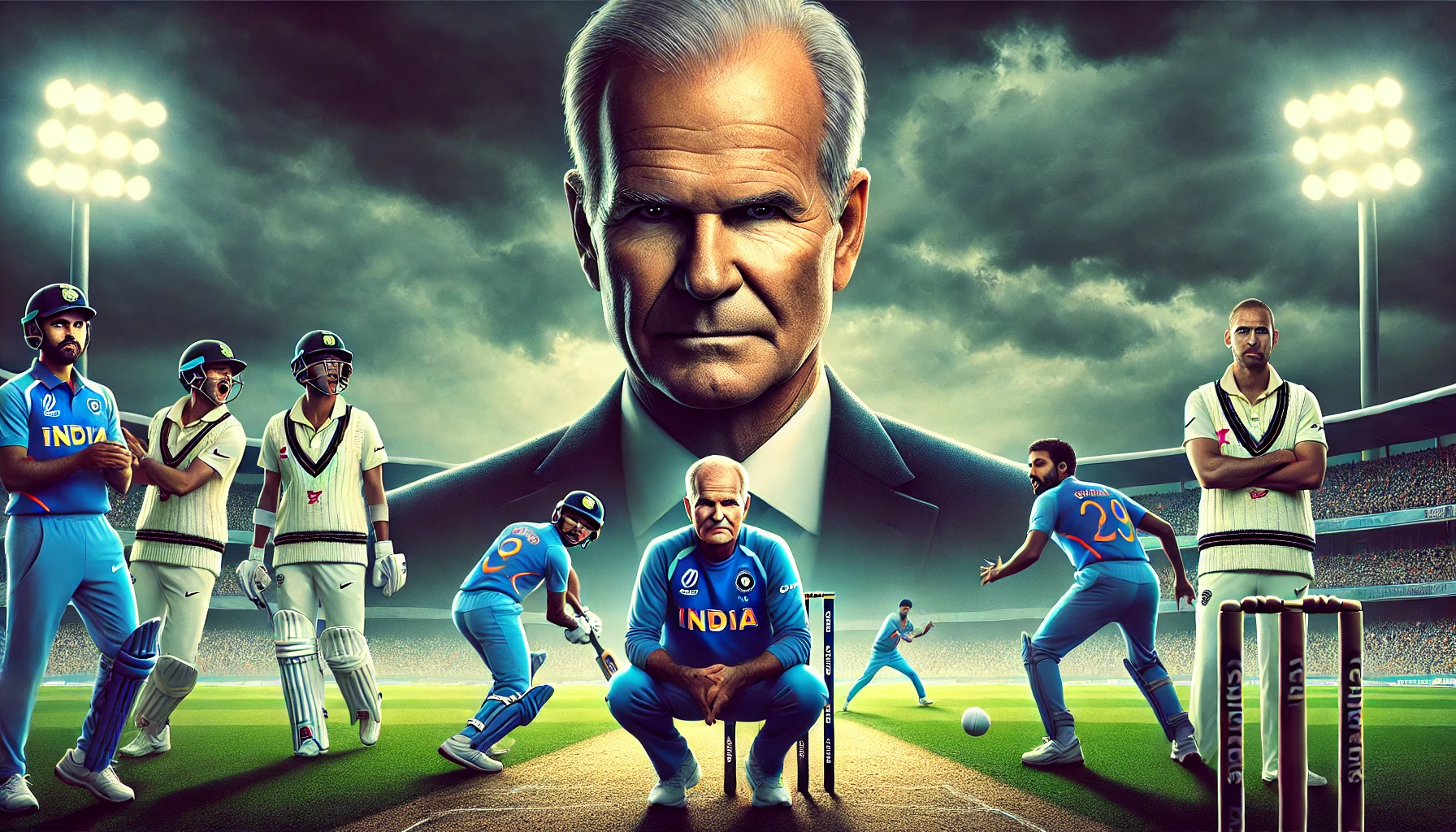
Greg Chappell Indian cricket controversy : Damaged Indian Cricket
Greg Chappell Indian cricket controversy Destroyed the Indian Cricket Team
Introduction
Greg Chappell, the former Australian cricketing great, was appointed as the head coach of the Indian cricket team in 2005. His tenure, however, turned out to be one of the most controversial periods in Indian cricket history. While his coaching methods were intended to bring about a positive change, they ended up creating rifts within the team, leading to instability, player dissatisfaction, and ultimately, India’s early exit from the 2007 ICC Cricket World Cup. This article explores how Greg Chappell’s tenure led to a downfall in Indian cricket during his time as coach.

The Appointment of Greg Chappell
Following the resignation of John Wright, who had a successful stint with the Indian team, Greg Chappell was appointed as the head coach in May 2005. He was chosen over other candidates, including former West Indies great Desmond Haynes and India’s own Mohinder Amarnath. Chappell was expected to bring in an aggressive, performance-driven approach, but his tenure soon became a period of turmoil.
The Infamous Sourav Ganguly Conflict
One of the most defining moments of Chappell’s tenure was his fallout with then-captain Sourav Ganguly. Ganguly, who had played a pivotal role in India’s resurgence in world cricket, found himself at odds with Chappell’s methods.
- Conflict Begins: During India’s tour of Zimbabwe in 2005, Chappell reportedly suggested that Ganguly step down as captain, claiming he was unfit for the job. This led to a major controversy, as Ganguly revealed the discussion in a press conference after scoring a century.
- Ganguly’s Removal: Soon after, Ganguly was removed from captaincy and eventually dropped from the team, an act that divided the dressing room and upset senior players like Sachin Tendulkar, Rahul Dravid, and VVS Laxman.
- Team Division: The move created a rift in the team, with players either siding with Chappell or remaining loyal to Ganguly. This division severely affected the team’s morale and unity.
The Dressing Room Turmoil
Greg Chappell’s authoritative and confrontational style of coaching did not sit well with many senior players.
- Micro-Management: Chappell was known for micromanagED players, often interferIED in their natural playing styles. His attempts to force a complete change in the way players approached their game led to confusion and frustration.
- Lack of Communication: Many players felt that Chappell lacked proper communication skills and failed to provide clarity regarding selections, strategies, and team roles.
- Rift with Seniors: Players like Sachin Tendulkar and Virender Sehwag later admitted in interviews that Chappell’s coaching methods were damaging and demotivating.
- Experimentation Failure: Chappell introduced excessive and unnecessary experimentation, often changing batting orders and team combinations, which left players unsettled and impacted performances.
The 2007 Cricket World Cup Disaster
The ultimate failure of Greg Chappell’s tenure was India’s disastrous performance in the 2007 ICC Cricket World Cup.
- Poor Team Selection: The squad lacked balance, and key players were either not played out of position.
- Tactical Failures: Chappell’s strategies, such as experimenting with different opening combinations, failed miserably on the big stage.
- Low Morale: The internal conflicts and lack of stability affected player confidence, leading to India’s shocking first-round exit after losses to Bangladesh and Sri Lanka.
Aftermath of Chappell’s Exit
Following the World Cup debacle, Greg Chappell stepped down as India’s head coach in April 2007. The team slowly recovered under new coach Gary Kirsten, who brought stability and unity back into the squad.
- Reintegration of Seniors: Players like Sourav Ganguly made strong comebacks.
- Dhoni’s Leadership: Under MS Dhoni, India won the 2007 T20 World Cup, signaling a fresh start for Indian cricket.
- Better Coaching Approach: Kirsten’s coaching methods emphasized trust and teamwork, the opposite of Chappell’s authoritarian style.

Conclusion
Greg Chappell Indian cricket controversy – His rigid approach, conflicts with senior players, and constant team experimentation led to instability and a lack of confidence within the squad. While his intent may have been to modernize Indian cricket, his methods ultimately resulted in division, disappointment, and failure. His exit marked the beginning of a more successful era for Indian cricket, proving that leadership and coaching require more than just technical expertise—it requires an understanding of the players and team culture.





Add comment